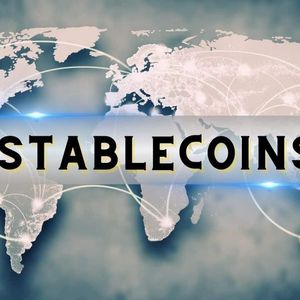Bitcoin Mining Grows in Africa as Analysts See BTC Doubling by Year End
5 min read
Bitcoin’s global momentum is being reinforced by developments on both the infrastructure and investment fronts. In Ethiopia, mining firm Phoenix Group has expanded its capacity to 132 megawatts powered by clean energy, marking a significant milestone for sustainable crypto operations in Africa. Meanwhile, Peter Chung of Presto has reiterated his prediction that Bitcoin could hit $210,000 by the end of 2025, pointing to institutional adoption and expanding liquidity as key drivers behind his outlook. Phoenix Group Expands Bitcoin Mining Capacity in Ethiopia to 132 MW, Strengthening Its Global Footprint Bitcoin mining firm Phoenix Group has announced a major capacity expansion in Ethiopia, adding 52 megawatts (MW) to its operations in the country. This development brings the company’s total mining capacity in Ethiopia to 132 MW, and pushes its global capacity beyond 500 MW. In a press release dated April 29, Phoenix Group’s co-founder and CEO Munaf Ali emphasized the strategic importance of the expansion. “Initiatives like our latest expansion in Ethiopia are pivotal steps, not only creating significant value today but also solidifying our position,” he said. Ali also reiterated the firm’s strategy of targeting prime locations with abundant, low-cost energy, aligning with Phoenix’s broader vision of sustainable, high-efficiency mining operations. The latest expansion follows a power allocation agreement Phoenix secured in January 2025, giving the company rights to draw up to 80 MW of power in Ethiopia. At the time, the company noted that its new mining facility would go live in the second quarter of 2025 — a timeline the company is now well on track to meet. The new 52 MW site is being rolled out in two stages. The first phase, currently underway, utilizes 20 MW to power 5,300 air-cooled mining machines with an estimated hashrate of 1.2 exahashes per second (EH/s). The second phase, expected to be completed by the end of Q2 2025, will bring the site to full capacity using water-cooling technology, boosting its total hashrate to 2.4 EH/s. To put that in perspective, a single exahash represents one quintillion (10^18) hashes per second, a unit used to measure the computing power of a blockchain network — especially relevant to Bitcoin mining operations, where computational efficiency is key. Focus on Sustainability The expansion isn’t just about raw power; it’s also a statement on sustainability. Reza Nedjatian, CEO of Phoenix’s subsidiary focusing on mining, artificial intelligence, and data centers, stressed the use of hydropower to run their Ethiopian operations. “With 132 MW now running on clean hydropower, we’re proud to set a new benchmark for sustainable mining in Africa and deliver large-scale operations in energy-rich regions,” said Nedjatian. This positions Phoenix Group at the forefront of eco-conscious crypto mining, especially in a global context where regulatory scrutiny and environmental concerns are increasing. Phoenix Group has been expanding aggressively across both infrastructure and investment dimensions. After its high-profile IPO on the Abu Dhabi Securities Exchange in late 2023, which saw 33x oversubscription for its $371 million public offering, the company’s stock quickly gained traction — rising by 50% shortly after its debut. As of April 2025, the firm’s shares are trading around $7.94, a strong signal of investor confidence. In early 2024, Phoenix made headlines with a massive $187 million Bitcoin mining equipment acquisition, further consolidating its status as a heavyweight in the mining sector. But its ambitions go beyond just mining. In partnership with Tether, the world’s largest stablecoin issuer, and Green Acorn Investments, Phoenix has also ventured into the stablecoin arena. The collaboration aims to launch a new stablecoin pegged to the United Arab Emirates dirham, reflecting Phoenix Group’s growing influence across the digital asset ecosystem. Ethiopia’s Role in the Crypto Mining Map Ethiopia is emerging as a strategic hub for Bitcoin mining , thanks to its untapped hydropower resources and favorable geography. With Phoenix Group setting up large-scale facilities powered by clean energy, the country could attract more institutional mining operations, especially as global regulators and investors place increasing importance on sustainability and renewable energy sourcing. In contrast, crypto mining proposals have faced resistance in other regions. Just last week, a city in Arkansas, USA, rejected a crypto mining proposal after facing local community backlash over environmental and noise concerns. Peter Chung Reiterates $210K Bitcoin Target by End of 2025 Amid Growing Institutional Demand In related news, Bitcoin (BTC) could more than double from current levels to reach $210,000 by the end of 2025, according to Peter Chung, head of research at quantitative trading firm Presto. In an April 28 interview with CNBC , Chung reinforced his bullish forecast, citing rising institutional adoption and global liquidity expansion as the primary drivers. Despite a turbulent macroeconomic environment this year, Chung characterized Bitcoin’s recent pullback from its March highs as a “healthy correction”, rather than a bearish signal. “In hindsight, I think it was actually a healthy correction which has paved the way for the further re-rating of Bitcoin as a mainstream asset,” he explained. Bitcoin’s Dual Identity: Risk Asset and Digital Gold Chung also highlighted Bitcoin’s evolving narrative as both a “risk-on” asset and “digital gold.” He noted that Bitcoin typically trades like a high-beta tech stock, reacting to investor risk appetite and user adoption trends. But during episodes of systemic instability—such as the 2022 Russia-Ukraine conflict or the 2023 Silicon Valley Bank collapse—Bitcoin has behaved more like a safe-haven asset. “These moments are rare,” Chung said, “and only happened when the market has doubts about the stability of the US dollar-dominated financial system.” Although Bitcoin has underperformed gold during recent market stress, Chung believes it has room to “catch up” and may outperform traditional safe-haven assets by year-end. Chung’s renewed confidence aligns with broader market trends showing an increase in institutional Bitcoin interest. Bitwise CEO Hunter Horsley noted in a recent X post that Bitcoin’s recent surge to $94,000 occurred with minimal retail involvement, as Google search volume for “Bitcoin” remains low compared to previous bull markets. “The types of investors buying Bitcoin is expanding,” Horsley said, citing institutional allocators, financial advisers, corporations, and nation-states as key players driving the current rally. Data from BitcoinTreasuries.NET supports this shift, indicating that corporate Bitcoin treasuries now hold nearly $65 billion worth of BTC. Corporate BTC holdings (Source: BitcoinTreasuries ) Adding further weight to Chung’s outlook, analysts from Standard Chartered and Intellectia AI recently projected that ETF inflows and macro hedging strategies could push Bitcoin to double in price this year. In just the past week alone, Bitcoin and Ethereum ETFs saw over $3.2 billion in inflows, according to Bloomberg. Ethereum Outlook Still Bullish Chung also maintained Presto’s positive stance on Ethereum (ETH), reaffirming their valuation model based on the ETH-to-BTC ratio. This comes amid ongoing Ethereum network upgrades and continued adoption of its Layer-2 scaling solutions. Peter Chung’s renewed $210K forecast reflects rising conviction among institutional players that Bitcoin is evolving beyond speculative territory and toward mainstream financial integration. While retail investors remain relatively sidelined, the influx of professional capital, combined with macroeconomic uncertainty, could be laying the groundwork for a new leg up in Bitcoin’s historic run. With more corporate treasuries, advisory firms, and sovereign entities entering the crypto arena, the coming months may offer a clearer view on whether Bitcoin can fulfill its dual promise as both a growth vehicle and a digital store of value.

Source: Coinpaper


